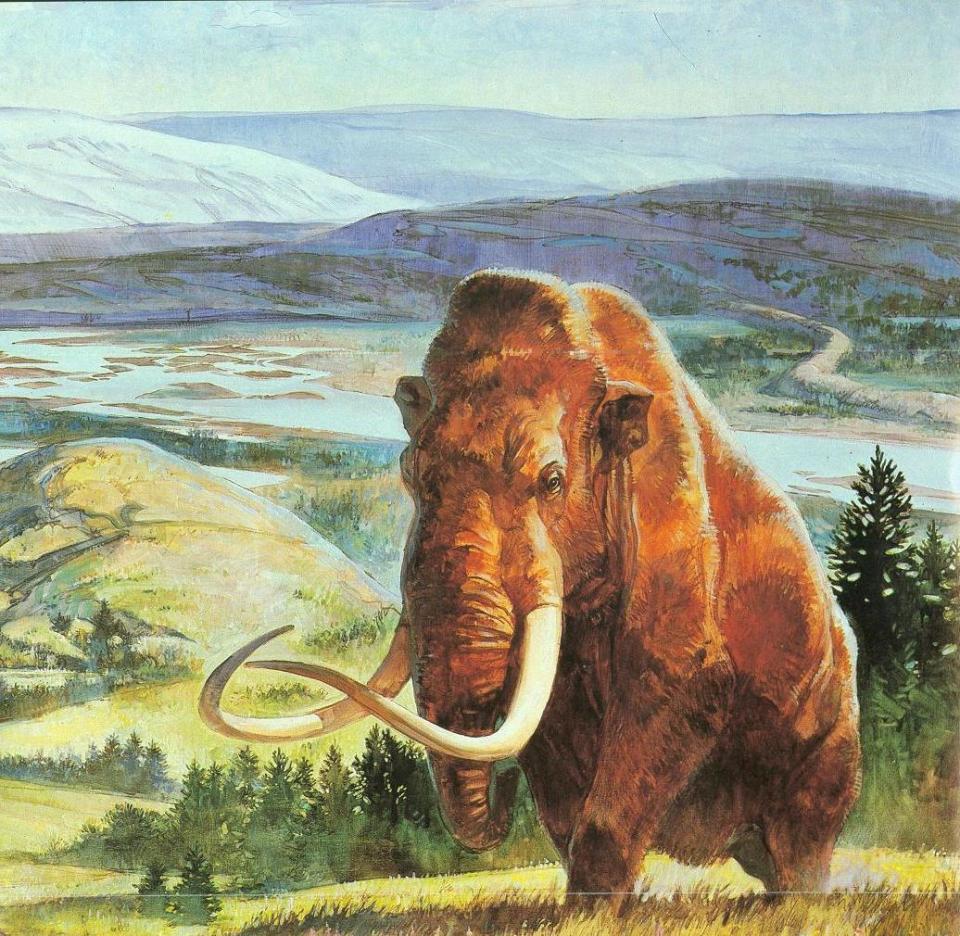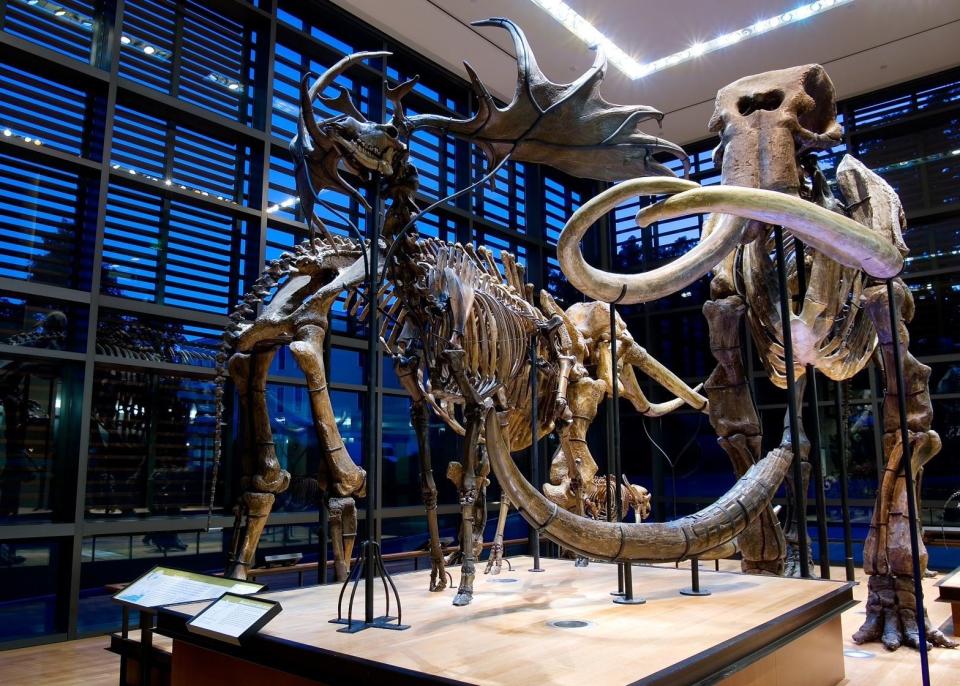A toddler's Ice Age discovery: Woolly mammoth tooth found in Florida

MELBOURNE, Fla. — A toddler stumbled upon a woolly mammoth tooth last weekend alongside a retention pond in Florida, uncovering evidence of the tusked beasts that roamed the state's coast thousands of years ago.
Monte Brigance, a retired offshore electrician from Livingston, Texas, was baby-sitting his grandson Colt Couch, who turns 3 on Wednesday, during the unexpected discovery in southeast Palm Bay.
"He was throwing rocks into the pond. That's his favorite thing to do: throw rocks in the pond that he picks up out of the bank. About half of this was sticking out of the soil, and he couldn't pull it up," Brigance said, holding the mammoth tooth.
"So I pulled it up for him and got to looking at it — and I decided that we'd better not throw it away. We'll clean it up and see what it looks like.
"Out of all the places my wife and I have been, looking for fossils — and yet we come to Florida and go to a pond, and there it is sticking out of the ground. It was a nice little find."

Though most people conjure mental images of woolly mammoths trudging across snow-swept Arctic tundra, Ice Age creatures were common in Florida, particularly along the Atlantic Coastal Ridge.
"Twenty thousand years ago, sea level was 400 feet lower than it is today. So the ocean shoreline was like 40 miles off the coast here. The Indian River was a lot like the St. Johns prairie today," said Bob Gross, past chairman of the Brevard County Historical Commission.
"You have these big grazing prairies. The mammoths were grazers, and the mastadons were browsers. You can see their teeth are totally different in their structure.
"You can picture those prairies covered with bison, with mammoths and mastadons, giant ground sloths, camels, horses."

Archaeologists have excavated skeletons of mammoths, mastadons and fellow Pleistocene creatures from the famed "Melbourne bone beds."
These deposits, which lie beneath Crane Creek Reserve Golf Course and the nearby Florida Institute of Technology, extend southward to Vero Beach.
"If you go to any sand pit that gets below the surficial geology, you can pick shark's teeth, various mammal bones. You can pick mastadon and mammoth teeth and bones," said Gary Zarillo, Florida Tech professor of ocean engineering and marine sciences.
"The fossilized skeletons of the large megafauna that we had here up until about 10,000 years ago: large sloths, saber-toothed cats, things like that."
Columbian mammoths appeared in Florida about 1.5 million years ago, then vanished about 10,000 years ago because of human hunting and other factors, according to the Florida Museum of Natural History in Gainesville.
In 1913, the Indian River Farms Co. dredged a Vero Beach canal, revealing bones of mammoth, mastadon, giant armadillo and other extinct species. Two years later, a human skull was spotted on the canal wall.
This "Vero Man" discovery marked the first in the New World where human remains and artifacts were found alongside Ice Age animals, according to the Florida Museum of Natural History. Researchers believe the find shows people inhabited Florida as far back as 14,000 years ago or more — much earlier than previously believed.
In Melbourne, Crane Creek and its tributaries yielded similar discoveries during the 1920s. Archaeologists Frederick Loomis of Amherst College and James Gidley of the Smithsonian Institution unearthed two complete mammoth skeletons and found the crushed skull of "Melbourne Man," akin to his Vero counterpart.
One skeleton was excavated at today's Botanical Gardens on the Florida Tech campus. Today, this Melbourne mammoth looms above visitors alongside skeletons of a mastadon and Irish deer at the Beneski Museum of Natural History at Amherst College in Massachusetts.
What's more, the Division III school's athletic teams are nicknamed the Mammoths.

At Florida Tech, a partial mammoth molar is displayed inside a glass showcase at Evans Library. Discovered near campus, the molar dates back more than 10,000 years.
And in Cocoa, a replica mastodon skeleton highlights the Brevard Museum of History & Natural Science. That beast's bones were cast from a mastadon found in the Aucilla River near Tallahassee.
Brigance said he initially suspected the mammoth tooth was a piece of asphalt.
“I always think it’s amazing when archaeological discoveries are made like this — especially when everyday people just kind of stumble onto items like this,” said Ben Brotemarkle, Florida Historical Society's executive director.
“It’s amazing just to contemplate what it would have been like to be a human being alive at that time, when those types of huge animals were roaming around."
Follow Rick Neale on Twitter: @RickNeale1
This article originally appeared on Florida Today: A toddler's Ice Age discovery: Woolly mammoth tooth found in Florida

